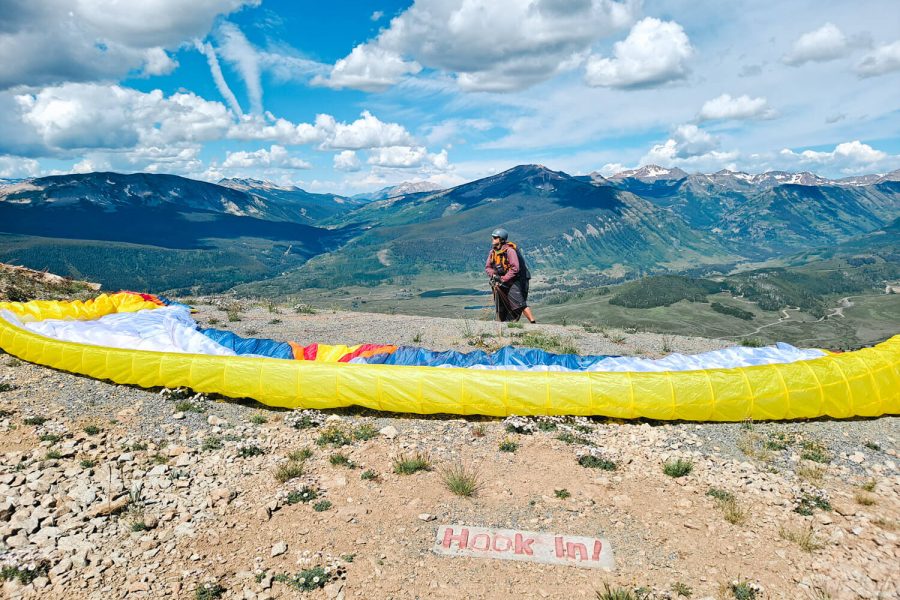by Dawne Belloise
Childhood fantasies of flight begin from the time we run against the wind feeling the tug of the string and experience the sensation of lift as our first kite launches aloft into the day. Perhaps it’s the liberation from the shackles of gravity and escapism from current circumstances that inspires us to lucidly dream of flying. Here in Crested Butte, many of us are still pursuing our childhood pleasures with grown-up toys. Flying is no exception. Starting in the late 1970s, self proclaimed pilots began launching themselves from Crested Butte Mountain on hang gliders and in 1976, the Crested Butte Soaring Society (CBSS) was officially formed and has about a dozen members today with three hang glider pilots and the remainder paragliders. The sport was relatively new throughout the U.S. back when the CBSS launched and much more challenging in the ever-changing weather conditions of the mountains.
Hang gliders and paragliders now have to engage in strict certification through education. They must essentially become micro meteorologists. Since the ‘70s and ‘80s, their equipment has evolved for optimum and ultimate flight through better technology and design. Hang gliders are suspended from the airframe in a harness, flying like Superman, head forward with their bodies stretched prone behind them. They shift their body weight to control the wing’s direction and head off searching for thermals – updrafts of heated air that will carry them to higher altitudes, allowing them to fly for hours.
Paragliders fly suspended in a harness below their fabric wing, also known as a ram-air airfoil or parafoil, which is shaped by air pressure entering the tubular vents that form a row of cells in the front. Since the cells are only open in the front leading edge, the incoming air keeps the wing inflated, maintaining its shape. The difference between a parachute and a parafoil is their purpose – parachutes are designed for descending only while paragliders ascend.




